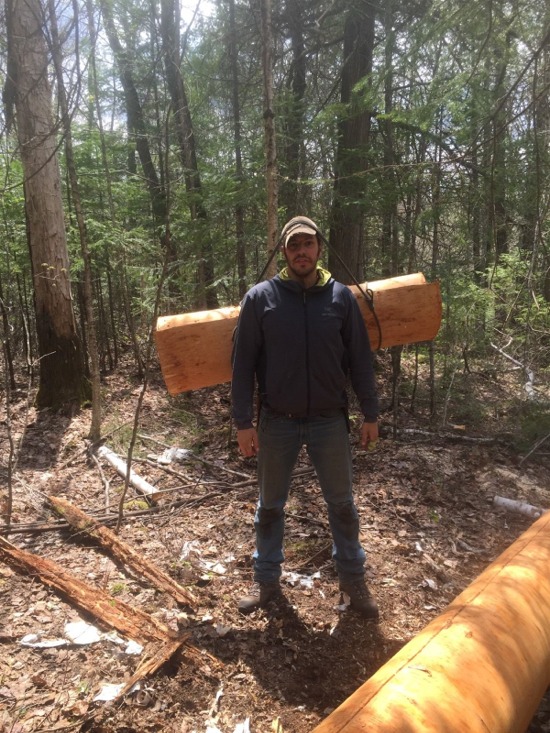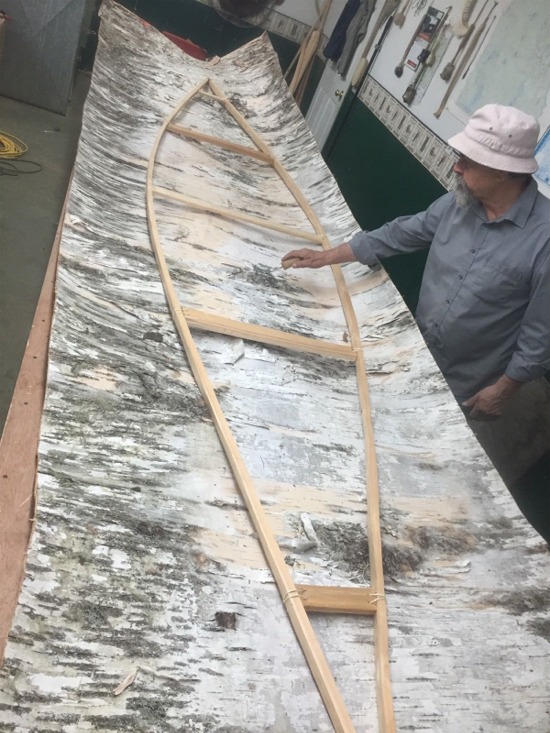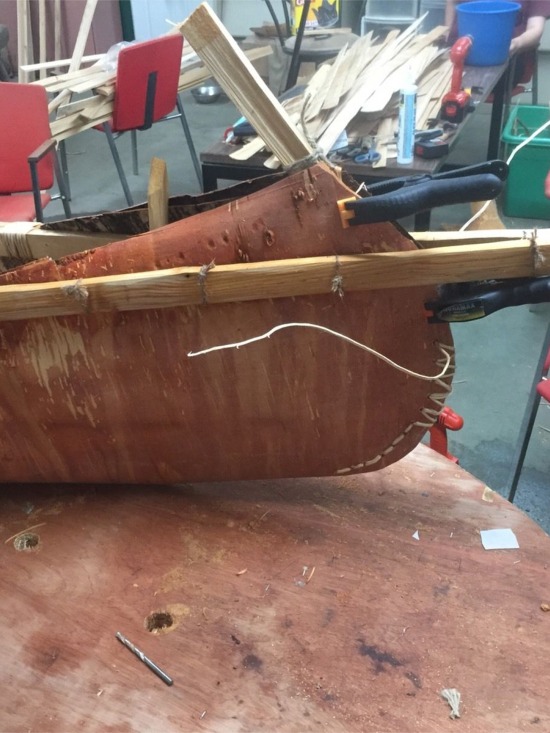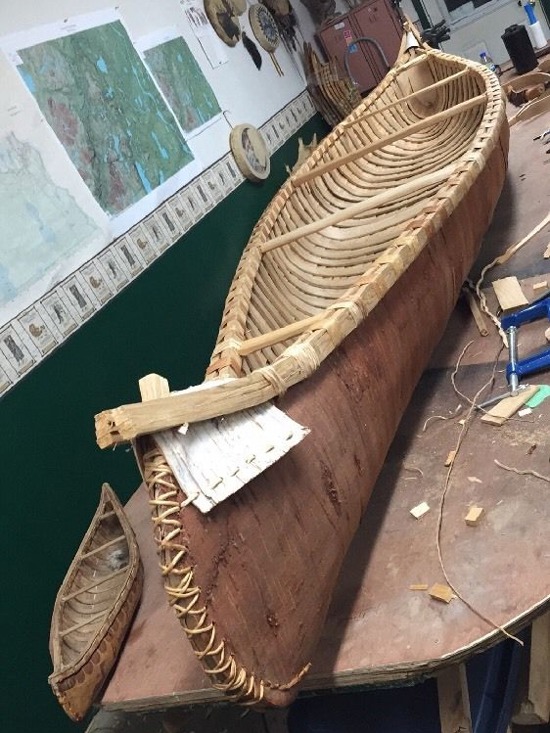Not really a technology for sea kayaks, but too beautiful and fascinating to leave out!

The photos on this page are reproduced by kind permission of Edward Askham-Spencer. Ed builds birch bark canoes for sale. He is a traditional shipwright based in Fareham in England, who works with Pinock Smith of the First Nations to make sure his boats are authentic in every way. (We'll let you know Ed's contact details when we get them.)

Birchbark canoes have a tough, flexible, all-natural skin which is quite literally the bark of the "paper birch" or "canoe birch" tree, Betula papyrifera.
Ed comments, 'The time line for working these materials, harvesting, through to the canoe being ready can take between 1 and 3 months as there are many processes involved.'
Birchbark canoes are working boats that have been made for uncounted thousands of years by First Nations people of Canada.
European colonists adopted these boats for trade and exploration across Canada, and they have been built in all sizes, from one-man boats about 13 feet long up to the "rabaska" which could be 35 feet long, 6 feet wide and able to carry a load of 4 tons.
 A quote from the Wikipedia article: Archibald McDonald of the Hudson's Bay Company wrote: "I never heard of such a canoe being wrecked, or upset, or swamped ... they swam like ducks." And if they were damaged by hitting a rock, they could easily be repaired using materials available near the river.
A quote from the Wikipedia article: Archibald McDonald of the Hudson's Bay Company wrote: "I never heard of such a canoe being wrecked, or upset, or swamped ... they swam like ducks." And if they were damaged by hitting a rock, they could easily be repaired using materials available near the river.

The birch bark canoe has a light wooden frame consisting of a gunwale made from solid wood...


... and ribs made of thin wooden slats, steamed to shape.

Starting to look like a canoe:


